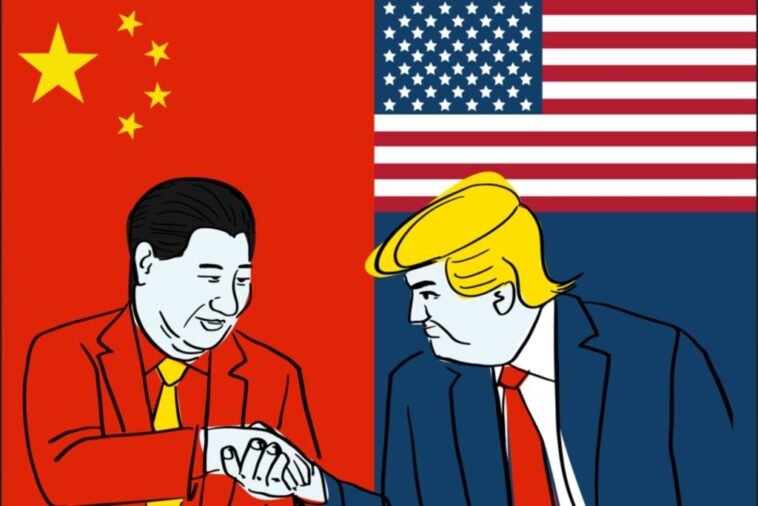Amid a turbulent geopolitical landscape marked by missile strikes on Iranian nuclear installations, China’s reaction emphasized its desire to be a global influencer, while revealing the limitations that such an ambition might possess. The unfolding crisis provided insights into China’s Middle East strategy, its role in global diplomacy, and the supposed ‘Axis of Upheaval’ emerging among China, Russia, and Iran. On a topical level, China swiftly demonstrated a response echoing its larger foreign policy. It voiced condemnation for Israel’s initiatory attacks, advocated for an urgent truce, and undertook vigorous diplomatic operations at the United Nations.
Labelled as high rhetoric and low risk, China’s diplomatic approach played into its larger philosophy of ‘active non-alignment’. By denouncing Israel and advocating for peace, it bolstered its reputation as a responsible participant in international issues — devoted to upholding sovereignty, refraining from intervention, and ensuring justice. Although, there were no substantial efforts to facilitate negotiations between Israel and Iran, apart from official declarations.
They maintained a strategic partnership with Tehran and an inclination towards preserving access to Iranian energy. Despite this, Beijing refrained from offering anything that could potentially influence the progression of the conflict. Moreover, it did not exploit its economic associations with either of the conflicting parties to induce de-escalation. The comparative determination of the US and China’s diplomatic rhetoric is not likely to be overlooked by the regional entities.
While China advocates for a restrained, development-based multipolar vision, it’s largely the US that continues to possess the power to transform the realities of warfare. This discrepancy instigates an awkward question for Beijing: can a country that not only resists bold reactions during crises but also lacks trusted alliances, operational experience, and the tools to manage crises, legitimately contend for global domination?
In any conflict involving the Middle East, China is particularly concerned about the susceptibility of its energy supplies. Approximately 40% of its oil imports come from this region, and about 20% of the world’s oil supplies traverse through the Strait of Hormuz. The possibility of an Iranian blockade due to the war raised serious concerns, prompting immediate proclamations from Beijing against any ‘regional mayhem’.
The conflict underscored a key element of China’s energy strategy: its interests are vulnerable yet not fully exposed to shocks from the Middle East. This incident reinforced China’s effort to diversify energy routes, incorporating overland pipelines via Central Asia and the China-Pakistan Economic Corridor (CPEC). This highlighted how energy security forms a significant weak point in China’s approach to global crises.
While Beijing has clocked significant success in renewable energy technology developments and implementations, industries such as petrochemicals and heavy industries will rely on oil in the foreseeable future. Considering the dependency of its economy on Middle Eastern oil, China remains susceptible to macroeconomic volatility, an uncomfortable reality for a major power.
The Israel-Iran conflict served as a revealing trial for the durability of non-Western alliances, exposing significant weaknesses. Both China and Russia condemned Israel but didn’t provide Iran with substantial support. China, too, maintained a distance, indicating that strategic partnerships do not equate alliances, and shared resentments against the West do not inherently mean shared goals.
Certainly, the solitude experienced by Iran during the conflict was notable. It lacked military allies willing to step in, economic partners able to protect it from sanctions or attacks, and diplomatic advocates capable of deterring US or Israeli actions. It’s a stark reminder that the hypothesized ‘Axis of Upheaval’ is fragile, built on transactional interests rather than a unified security framework. For China, it serves both as a caution and a validation of its preference for minimal engagement.
China exhibits a strategic hedging approach, positioning itself to take advantage of US overreach and regional instability, while maintaining a semblance of neutrality through minimum diplomatic efforts. This hedging might help to preserve flexibility, but it also sets limitations on the extent of Chinese influence.
The crisis also paved the way for the US and China to exhibit their contrasting global leadership models. The US displayed its military prowess, its readiness to protect allies, and its central role in managing international crises through its immediate and forceful involvement. In stark contrast, China adhered to its principle of non-interference, prioritizing diplomacy, restraint, and multilateralism.
This contrast forms the cornerstone of China’s global narrative: It neither imposes its will nor uses force or creates entanglements. This stance has appeal in parts of the Global South, where China’s allure lie in its promise of growth without meddling. However, its lack of bold and decisive action during crises, either due to lack of capability or choice, raises questions about its role in influencing outcomes.
Despite a renewed American interest in the Middle East that might potentially delay the establishment of a post-American world order, it also provides China a strategic breathing space in the Indo-Pacific region. This allows China to solidify regional influence through economic involvement and diplomatic exchanges, positioning itself as an alternative to military-led regimes. China’s geopolitical ambitions need to couple with strategic commitment to truly alter global power dynamics and fulfill its aspirations as a new global power.

